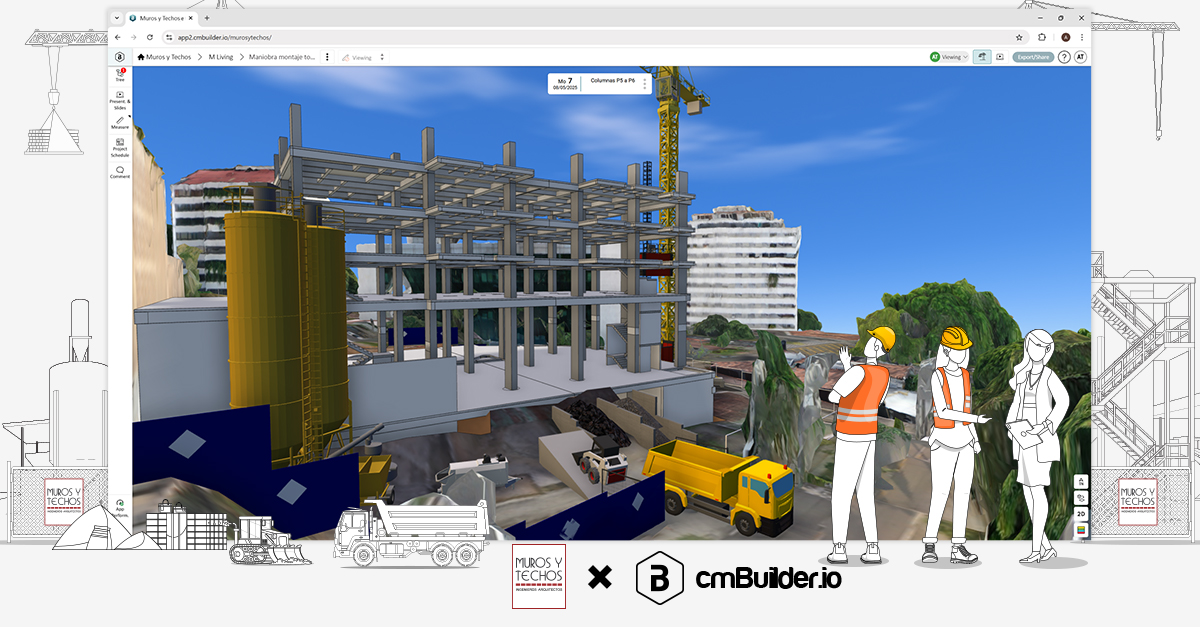Let’s talk about tower cranes! These tall and slender figures are a staple of construction sites and take on the bulk of the heavy lifting on site. Tower cranes are among the largest pieces of equipment used in construction projects. Construction crews use tower cranes to lift heavy materials such as concrete and steel. In this blog, we will discuss all things tower cranes and some basic considerations when working with this equipment.
Importance of Tower Cranes at the Construction Site
Tower cranes allow general contractors and site workers to work effectively and efficiently. From lifting and setting steel at every floor level to final electrical and mechanical installations, tower cranes tackle the most challenging tasks on the construction site. These heavy-lifting machines make site logistics planning possible for larger buildings especially in very tight urban spaces.
Without these tower cranes, our city skylines would look completely different as the hoists, chains, wires and ropes on these machines make construction work, previously considered hazardous, safer and more efficient. Whether it is building a bridge, railway or other structure, there is always a specific tower crane that can complete the job.

Parts of the Tower Crane
Tower cranes are generally made up of three main parts: the base, the mast or tower and the slewing unit.
Base
The base support is located at the bottom of the tower typically attached to a concrete pad on the ground. This attached concrete foundation carries the entire weight.
Mast or Tower
The mast is the supporting structure that gives the crane its height. It is connected to the base through a large triangulated lattice that gives the crane its strength. The mast extends from ground up and supports other elements like the hook and the counterweights.
Slewing Unit
The slewing unit is attached to the top of the mast, consisting of a gear and motor, allowing the crane to rotate along its axis. The slewing unit consists of three parts:
- Jib or Working Arm - Also known as the crane’s working arm, the jib is the horizontal component that carries the load, with a trolley that runs along its length to move the load in and out.
- Machinery Arm - This arm is a shorter horizontal component that holds the load-lifting motor. The machinery arm also contains the large concrete counter weights.
- Operator’s Cabin - The cab is the box where the operator sits while operating the tower crane. It contains the computer and joysticks used to handle all crane functions.
Things to Consider When Choosing a Tower Crane
Required Capacity
What type of materials or equipment do you plan on lifting? Will your crane be lifting materials like formwork and buckets of concrete? You should consider using a relatively light model. Or will your crane be lifting equipment like generators and large steel members? A heavier model may do the trick here. Always consider the tower cranes typical lifts and the lifts that are designed as critical. Critical lifts are typically those that are within 10% of the crane’s total capacity.
Space Availability
One of the unique benefits of a tower crane is the little amount of space it takes up on the ground. It is important to ensure that the position of the tower crane is not being impacted by surrounding buildings. Planning the crane location away from structures and infrastructures such as power lines is critical. If the tower crane is located near sideways or roadways, ensure that protection and special precautions are taken to protect the public.
Location
As most tower cranes are static, it is essential to plan your pick locations around your tower crane or plan your tower crane around your pick locations. If you are constructing a building that will be tall, a critical requirement would be high hook line speeds. High gear speeds are necessary for lifting light loads. Cranes get weaker the further the load is from the tower, making it important to plan the crane position close to pick locations to maximize its capacity.
Lift Locations
Most importantly, consult the load charts to ensure that the selected tower crane can lift the required loads at the expected radii. Identifying the furthest reach and heaviest lifts required is necessary to ensure that the selected crane will be capable of doing the job on site. Using the load chart and number of heavy lifts required as a reference, if there is a limited number of these heavy lifts, it may be more cost effective to choose a smaller tower crane or consider using a mobile crane as needed.
Types of Tower Cranes
Hammerhead Tower Cranes
The hammerhead crane is the most common tower crane design and the configuration typically associated with tower cranes. A long horizontal jib is attached to a vertical tower. A trolley runs along the jib to position the hook. Some hammerhead cranes use a tower top between the jib/counter jib assembly while others utilize a flat top without a tower top. Flat top tower cranes are especially useful near airports or in environments where multiple cranes swing through the same airspace. Hammerhead cranes are typically cheaper but take up more space on the construction site.
Luffing Jib Tower Cranes
This tower crane type is often referred to as a luffing or luffer. This construction tower crane features a diagonal arm which extends out from the top of the tower on an angle. Unlike the hammerhead, the hook block is placed off the end of the jib that rotates up and down. This type of crane is especially useful on tight construction sites. While most tower cranes have a fixed horizontal jib, the luffing jib can be raised or lowered to allow the crane swing freely(weathervane) in a reduced radius. A luffing jib does not use a trolley like traditional tower cranes, instead it raises or lowers the jib as needed for load lifts closer to the mast. Luffing cranes are typically more expensive.
Self-Erecting Tower Cranes
The self-erecting crane can be completely assembled on site without the need for an assist crane. These cranes are typically time and resource efficient. Self-erecting cranes are often remote-controlled from the ground though some versions may have a cab on the jib. These cranes feature an extendable mast and a jib that unfolds via hydraulic cylinders that are permanently fixed to the crane. These cranes are usually freestanding with limited hook heights and telescoping towers, making them appropriate for smaller structures or shorter projects.
Sources:
https://www.maximcrane.com/blog/everything-you-need-to-know-about-tower-cranes | https://www.ny-engineers.com/blog/the-role-of-tower-cranes-in-high-rise-building-projects | https://www.safeworkaustralia.gov.au/system/files/documents/2003/guide-to-tower-cranes-21032016.pdf | https://www.aggreko.com/en-ca/news/2019/nam-articles/construction/a-quick-guide-to-tower-cranes | https://essential.construction/academy/tutorials/a-guide-to-construction-tower-cranes/ | https://www.cranestodaymagazine.com/features/selecting-a-tower-crane | https://public.morrow.com/equipment/luffing-boom/
Want to try cmBuilder out for yourself? You can directly start a free trial on cmBuilder.io today! You can also schedule some time and book a customized demo with a product expert!









